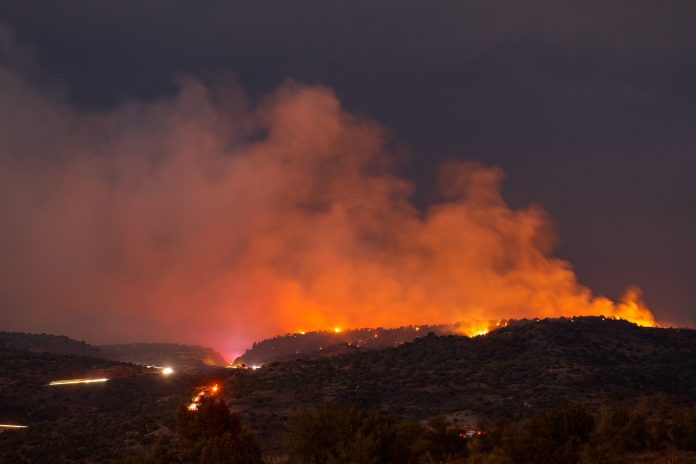The last day of September marked the end of monsoon for Northern Arizona, which began on June 15. According to data collected by the National Weather Service in Flagstaff, this year marked one of the driest in recent history.
According to Benjamin Peterson at the National Oceanic and Atmospheric Administration, total precipitation in areas of the Verde Valley were far below normal levels — just 0.70 inches in Uptown Sedona, 0.94 inches in Cottonwood, 1.60 inches in Camp Verde, 0.46 in Clarkdale. Jerome’s total precipitation for the 2020 season, 3.14 inches, is just 43% of the normal precipitation level of 7.33 inches, making it the fourth driest monsoon since records began in 1897.
Other recordings in Northern Arizona showed similar results, with places such as the Grand Canyon, Flagstaff, Williams and Prescott recording their driest or second driest summer on record.
According to NWS, this change was mostly due to weather on the West Coast moving the location of the high pressure that usually centers over the Four Corners area westward, stopping it from pulling moisture northward from the Gulf of California.
“As the monsoon went on, the dry soils and strong high pressure over- head actually prevented convection from forming and enhanced surface evaporation, leading to record temperatures,” Peterson wrote in an email. “There will surely be an affect on reservoir levels, forest health and animal health.”
“Ironically, the last year that was comparable to this year, was last year,” Peterson added, though he could not say whether climate change might be leading to lasting changes in summer rainfall in the area, and noted that a wet winter or spring could undo the effects of the dry summer.
The dry summer also meant increased difficulties for fire prevention in the area.
“This has been an extraordinary year with respect to wildfire,” Copper Canyon Fire and Medical District Chief Terry Keller said. “While there had not been a ‘monster fire’ in Arizona, along the lines of the Wallow Fire [burning 538,049 acres in 2011] or the Rodeo-Chediski Fire [burning 468,638 acres in 2002], there were some large fires, like the Bush Fire, and the current Sears Fire that gained enough size to be remarkable. There has also been some structures and homes lost, notably in Cave Creek early on during the season.”
The dryness has also meant that fire authorities in the area have kept burn bans and other restrictions in place for longer than they normally do, though they note that for the most part, the damage has luckily not extended into residential areas too much.
“Within the city we’ve been very fortunate,” Cottonwood Fire Chief Mike Kuykendall said. “We still have our fire restrictions in place and we never lowered them. No burn permits. That’s helped us from having fires because it certainly is very dry out there without the moisture.”
“At Copper Canyon, we have started to joke that there is little left along I-17 that had not burned this season, so we solved the fire problem,” Keller wrote. “A drive down the highway is a testament to the number of fires we have suppressed in conjunction with the Forest Service this year along this roadway this season. And we are not done yet, as it is still warm and dry with low a problem a couple of humidity levels, so the days this season [unlike conditions are still favor California currently].”



